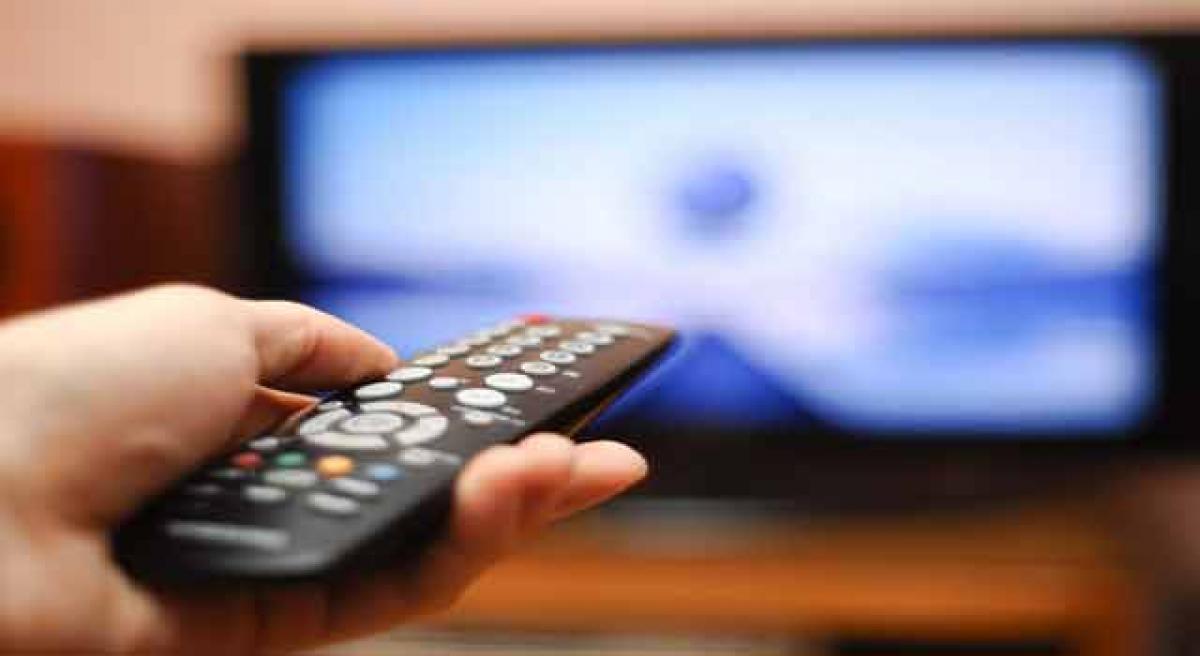Live
- Today’s welfare measures aim to empower: Nirmala Sitharaman
- Six scholars, including two women, win Infosys Prize 2024
- Gurukula zonal level sports meet concludes
- Vagdevi Jr College student selected for national basketball tourney
- Maoist area committee member arrested
- Collectorate staff protest attack on DC
- Villagers urge authorities to continue launch service even after construction of bridge
- MLA Padmavathi launches free lunch for readers
- Police high-handedness sparks outrage in Kodangal
- Khichi elected mayor of Delhi
Just In

With new technologies being discovered every moment and the dynamic change in content models and devices; television has been under the constant debate of dying. But is TV really a dying investment?
With new technologies being discovered every moment and the dynamic change in content models and devices; television has been under the constant debate of dying. But is TV really a dying investment?
Through its internet ad serving platform DoubleClick, Google is all set to revolutionise the way we look at television advertisements. While retaining the contemporary experience, here is how Google will make your experience more personalised
Google has the best counter argument. In its recent announcements, Google has hinted at giving a rebirth to television through its ad platform DoubleClick.
Google is utilising the data through new content models and connected devices to revamp the way television works, right from content creation to advertising.
In its keynote, Google announced new ways of finding and watching TV shows. With the large chunk of users turning to their phones to find information about their favourite TV shows, searches for TV content through mobile has gone up by 55 per cent in a year.
That’s the biggest insight; Google Search will soon have live television listings. Soon Google will suggest you apps, show timings while also giving information on which channel to turn your TV on to catch your favourite show live.
Google had released a few functionalities for TV in 2015, which included video actions that helped users find direct links to their favourite shows and movies on apps and websites on stores like Google Play.
Filtered ads:
As much as we users like to consumer personalised content on TV, we are demanding the same for advertisements. We do not want random spots of brand irrelevant to us to show up and ruin our mood.
By announcing DoubleClick’s Dynamic Ad Insertion, Google is taking steps towards exploring new advertising horizons to television broadcasters and content providers.
Aiming at creating individual streams for every viewer and using the analytics to target respective ads, Google will be taking viewer experience to a whole new personal level, without disturbing the contemporary feel of it.
We are not ‘just’ saying all this; all the features we spoke about have been tested on the Rugby World Cup Finals and Fox News. Google has also been testing it across linear TV with Google Fiber digital set-top boxes.
The beta version of this project was able to deliver results, as personalised as promised by Google and we are sure that Dynamic Ad Insertion will also help marketers find their niche and target them where they are, instead of blindly shooting in the dark.
The Unique Selling Proposition (USP) of using Dynamic Ad Insertion is that the television broadcasters need not necessarily use DoubleClick for Publishers; they can rather integrate their ad servers with DFP and have the same functionalities.
Also, segregating ad breaks are on the charts for Google. Venturing into Smarter Ad Breaks, Google aims to control which ads will be broadcast during which ad break.
This is to ensure that no two that are diversely targeted show up back to back. All we can say about this initiative is that sooner or later, you will not complain about television ads being irrelevant and annoying; you will see what you want to when you want to.
By:Tushar Kalawatia

© 2024 Hyderabad Media House Limited/The Hans India. All rights reserved. Powered by hocalwire.com







